Opinions on rabbits vary from an asset to biodiversity to being a total scourge. The difference between the two is largely a matter of the numbers present. In this article, I report on how Steven McGonigal, a professional rabbit catcher, approaches rabbit control.
Rabbits have always been a pest to the farmer and a passion for Steven McGonigal, who has been a rabbit catcher since childhood. He has spent over 20 years pursuing rabbits and turned his hobby and passion into a business some years ago.
He said that things were a bit shaky at first, but now he is fully employed from January to December. His work has taken him right across these islands, into situations that range from dairy farms to oil refineries to shooting estates in Scotland.
Steven told me that the traditional and environmentally friendly methods he uses are leading to a large increase in business, with many customers wanting to avoid chemicals and, in some cases, firearms, which are not always welcome around stock.
As a specialist, Steven told me that he is increasingly busy because rabbits themselves are specialists at survival and recovery.
He said that there is not, and cannot be, one simple method to eradicate or control rabbits. Rabbits have had to adapt to all sorts of situations, otherwise they would be extinct by now.
There are many ways to target rabbit numbers and Steven said that he uses all of them through the course of a year, but that different jobs demand different combinations.
Rabbit control is much more about the ongoing control of a population rather than its elimination, and maintaining the balance within the countryside.
Background
By way of background, rabbit control has long been a feature of Steven’s life. He was born on the edge of Ireland’s last commercial rabbit warren in the northwest and his great-uncle made a living from these warrens in his youth.
This great-uncle was the last of a dying breed who made their income from netting rabbits, which were sold and shipped to Dublin. The meat was mainly sent to England, the bones were used for glue-making and the skins were sent to Paris.
Steven said that Ireland exported the world’s best rabbit skins up until the 1950s. He also said that the skins from his area commanded three times the price of other areas due to the unique shine they carried arising from a specific type of moss in their diet.
Rabbits are many things to many people. They arrived with the Normans during the 12th century, and can be a pet, a sporting quarry, a beautiful mammal and a downright pest.
Rabbits are a serious problem for agriculture. Steven said that in the UK alone, crop losses and damage are estimated in excess of £125m per year.
It is estimated that four rabbits eat as much as one sheep and with a population in England alone of around 37 million rabbits, the cost to the economy is substantial.
Most farmers have experienced severe grazing damage to crops or grass, especially close to hedges. Steven told how he once witnessed a laneway collapse because it was undermined by burrowing rabbits.
While they can cause serious damage, Steven emphasised that a few rabbits bounding around the borders of a field remain a pleasant sight.
But numbers seldom remain at a few and estimates suggest that the population will increase at about 20% annually. Given free reign and good feeding, rabbit numbers will quickly escalate and a few can turn into a few hundred very quickly.
Recent years have given us milder winters and wetter summers. These conditions have been ideal for rabbits, as they can breed almost all year round. However, rabbits will not tend to breed in long hard winters where the breeding season can be confined to the May to August period. These conditions help to slow the annual population increase. However, recent climatic conditions have enabled young to be present for most of the year.
In 1952, the man-made and very cruel myxomatosis disease was released in England in order to wipe out rabbits.
At that time, it was phenomenally successful and decimated an estimated 99% of the population in a short time. But several years later, the rabbit population had bounced back and, year-on-year, they are becoming more immune to this disease.
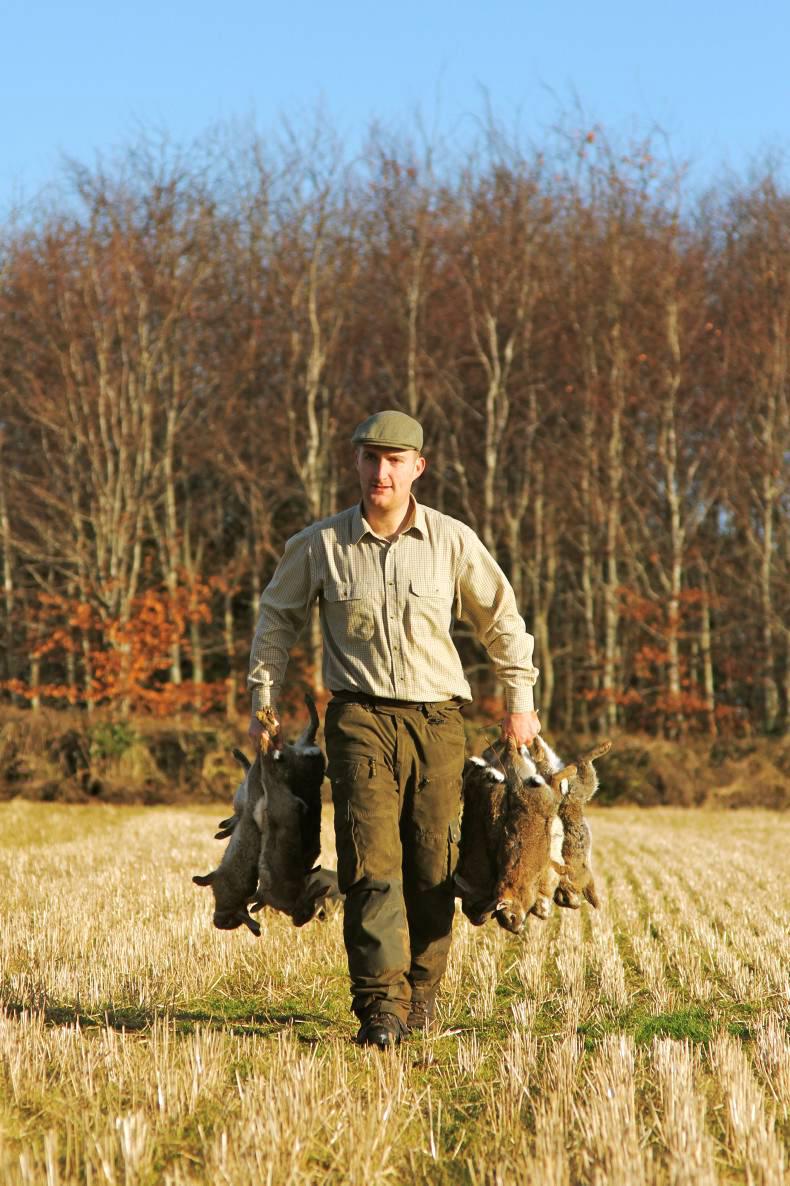
Control options
When Steven was a child, his grandfather controlled rabbits for several local farmers using a product called Cymag Gas. This poisonous powder was placed deep in rabbit warrens using a long-handled spoon and all holes to the burrow were blocked before this was done.
When the powder takes in moisture, it generates a poisonous gas which percolates through the warren and kills the rabbits. Cymag was not only deadly to rabbits – it also killed any other animals present in the burrow at that time. Examples of non-target casualties included ground nesting birds, stoats and possibly even foxes.
It was also very dangerous for the person using it. Even a slight whiff of the gas would make one very ill and a good breath would definitely kill. Cymag was banned some years ago and replaced with a product called Phostoxin, which is 55% aluminium phosphide.
Phostoxin comes in large silver balls and is used in the same way as Cymag. Operators can use a long plastic pipe to help get the balls deeper into the warren. Having blocked all entrances to the warren, the balls are placed and the last hole is closed.
Again, these generate gas and the rabbits are killed. However, Steven said that, in his opinion, Phostoxin is “not entirely effective”. And it is quite an expensive product.
Shooting
This is often the first option that people consider. Shooting can be effective, but it doesn’t take long for the rabbits to become wise.
The clever ones survive and it does not take long before they begin to scatter at even a distant glimmer of a light at night or the sound of a shot.
Daytime shooting can be effective too, but it can be more of a challenge to get someone to do the actual shooting, Steven commented.
Farmers rarely have the time, or patience, to spend hours shooting acres of ground. And while you may get a few lads to come along for a few shots, Steven said that it is difficult to get them to keep coming to complete the job. You quickly realise that it is almost impossible to shoot every single rabbit.
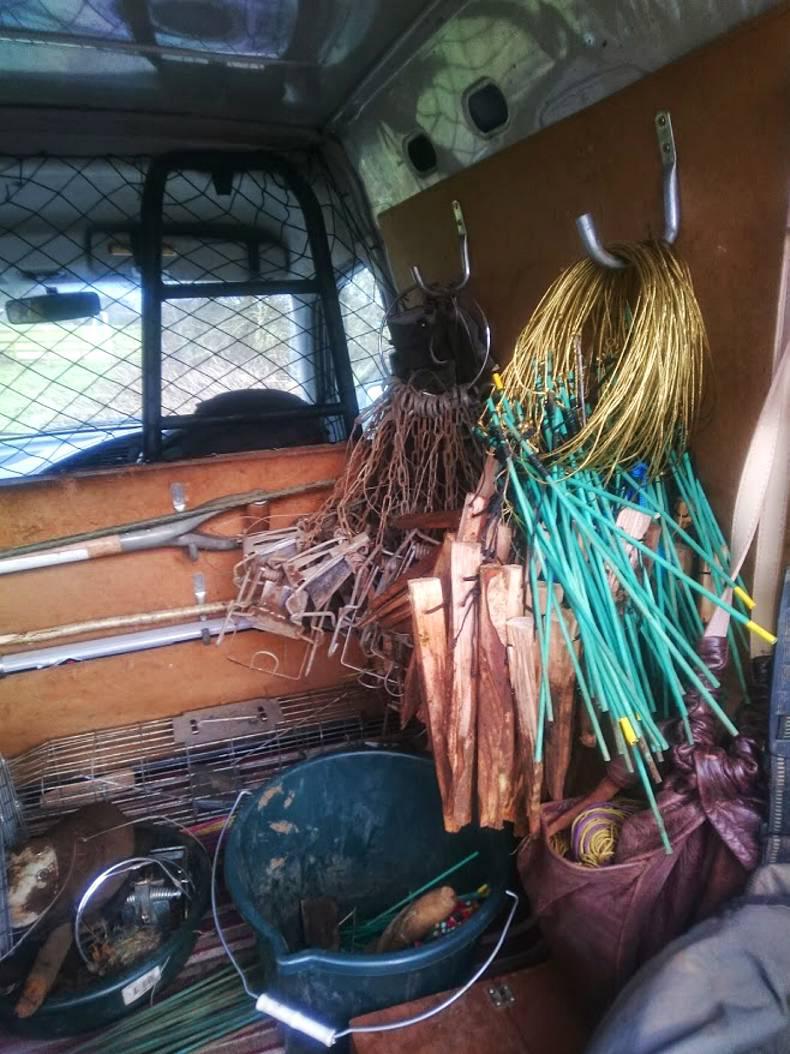
Trapping
Trapping and snaring are two very effective control methods. However, both are time-consuming and require a bit of investment in equipment, time and knowledge.
There are several trap types approved for use in Ireland, but some are out of production, leaving only a few to choose from.
Steven uses the Fenn MK6 spring trap and the Bodygrip trap, or BMI 116, for rabbits and these are readily available from merchants. Both are very effective for use inside rabbit burrows, where they must be placed by law.
Steven commented that he considers spring traps to be very effective. Their main drawback is cost, plus the time it takes to set, check and maintain each trap.
To set 50 traps means you must set out with a large and heavy load. You then have to find the warrens, set each trap and peg it down so that it cannot be taken by a fox, cat or person. You are then required by law to check these traps every 24 hours, or more often if possible.
Trapping is very effective and is to be recommended, especially on the correct ground. The main drawback for a farmer is the time involved.
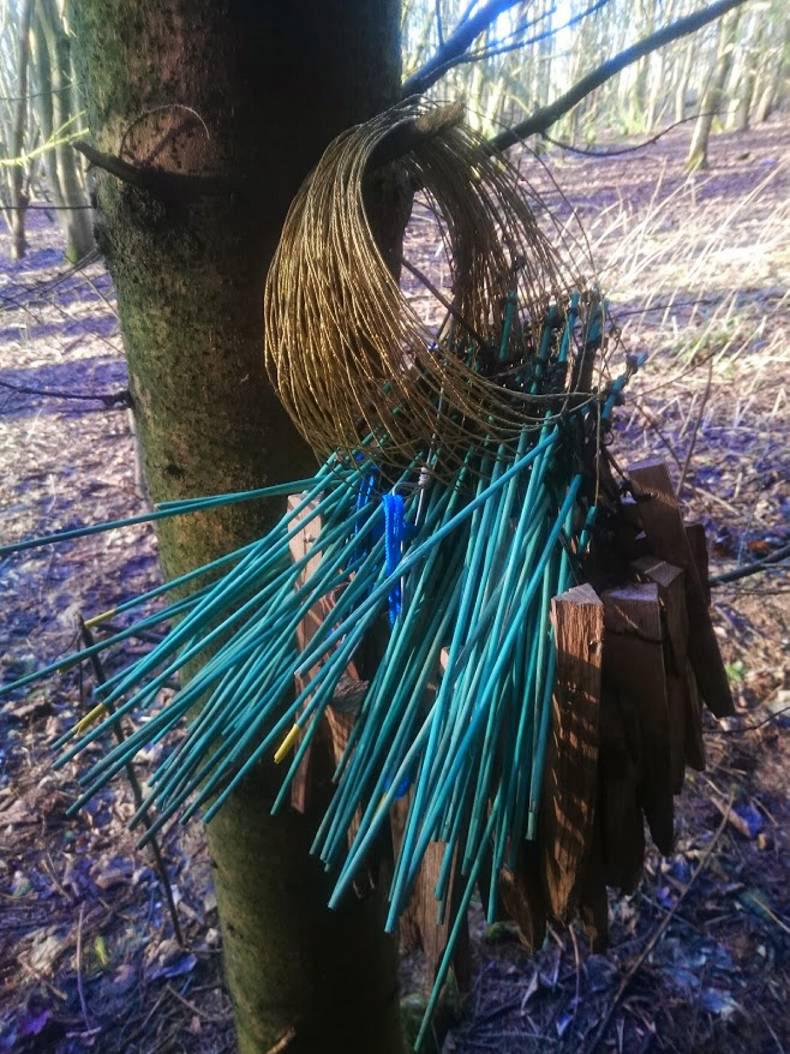
Snaring
Snaring is also highly effective for rabbit control, Steven said, and it is still legal in Ireland.
But there are some slight variations in the law here compared with Northern Ireland and England which people must be aware of. So be careful if purchasing snares from those jurisdictions.
There are set criteria for the design and use of a snare in Ireland. It must:
Have a stop set 16.5cm from the noose. Incorporate a swivel to enable twisting.Be tied to a fixed object.Have a jump bar at least 60cm above ground level to help prevent larger animals from being caught mistakenly (this bar is to be supported by a pair of forked sticks not less than 60cm apart (Wildlife Act 1976).Snaring can be very effective for rabbit control and 100 snares are cheap to buy, light to carry and quick to set.
On a good night, you might expect (with experience) to get a 90% catch rate, Steven said. As with trapping, the main constraint is the time to continuously check them.
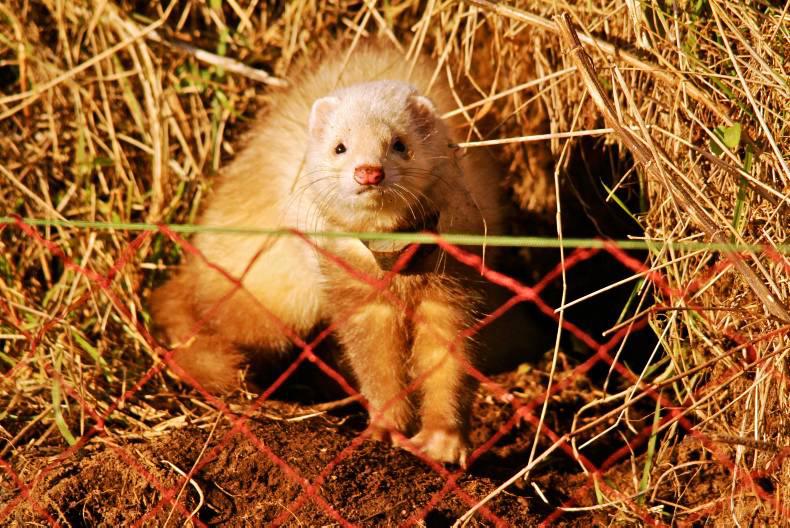
Ferrets
The ferret is as old as the rabbit and Steven regards them as the bread and butter of his professional rabbit control business.
The ferret is very versatile, because wherever the rabbit can get to, so can the ferret. Steven told me that he has ferreted rabbits from awkward places such as piles of round bales and from under rubbish tips.
In many situations, the only real option is to use the ferret for rabbits. Traps, snares and guns are not always possible or practical.
All we can do in some situations is to set out nets and drop in a few ferrets, which is something we are doing more and more for farmers across the country year after year.
Ferreting with nets and dogs works well in agriculture, Steven said. It doesn’t damage the ground, disturb livestock or cause any noise like a lot of other methods.
It is fast, effective, quiet, very discreet and really gets results alongside other methods such as trapping and snaring.
A born survivor
The reason the rabbit is, and will continue to be, successful is that it can adapt and it will continue to adapt.
The rabbit is highly versatile and has already defied generations of attacks to bounce back again and again.
For this reason, Steven believes that we must use many methods to curb population growth and maintain balance in the countryside.
He always uses a range of control methods on a job, which generally starts with ferrets and moves on to traps, maybe snares, and finishes with shooting.
Fencing options
In some situations, control is virtually impossible where rabbits are coming in from heavily infested areas outside the location.
In such situations, rabbit fencing is the only satisfactory solution. While it is a more expensive option, Steven says that rabbit fencing pays for itself in time.
The netted fence wire must be buried in the ground and will vary in height depending on the ground. The aim is to prevent rabbits from coming under or over the perimeter.
When a fence is used, Steven also incorporates rabbit drop boxes.
These are incorporated into the fence to allow rabbits to continue to come on to your land and they become a great catching device.
Rabbit drop boxes are made from galvanised steel and they are dug into the ground leaving a tunnel which the rabbits can use to enter and leave the fenced area.
After a few weeks, the rabbits become accustomed to using them and then the trapdoor contained within the device is opened.
After that, the rabbits drop into the box beneath every time that one passes through and the trapdoor closes, capturing the rabbit.
All that remains then is for someone to come along, remove the rabbits and reset the box.
While this method involves a relatively big initial outlay, for some farmers it is the only option and can save a lot in terms of lost crop yield and quality in the long run.
Tall tales
Like any other occupation, Steven said that there were many tall tales relating to magic cures for a rabbit problem.
He told me about a man who collected human hair from hairdressers and placed it all around his bedding plants.
The theory was that the rabbits would not cross the hair to eat, but then the wind blew the hair away.
Another story concerned a man who imported lion manure from an English zoo, at considerable cost, to help protect his garden.
The theory was that the rabbits would steer clear of the manure and leave his neatly groomed garden intact. But it appeared that nobody told the rabbits about the theory.
While there are endless products in hardware stores which tend to catch buyers rather than rabbits, Steven reminded me that the only things that really work are those which have been tried, tested and proven through the years – the age-old methods of ferrets, traps, snares and guns.
Steven can be contacted via his website at www.rabbitcatcher.co.uk or on mobile at 086-339 7334.
Steven can be employed to get rid of a problem, but each job is cost specific, so I cannot give an indication of the cost of curing a specific problem. But it is easy to calculate the cost of a rabbit problem and the value of control can quickly be evaluated.
Opinions on rabbits vary from an asset to biodiversity to being a total scourge. The difference between the two is largely a matter of the numbers present. In this article, I report on how Steven McGonigal, a professional rabbit catcher, approaches rabbit control.
Rabbits have always been a pest to the farmer and a passion for Steven McGonigal, who has been a rabbit catcher since childhood. He has spent over 20 years pursuing rabbits and turned his hobby and passion into a business some years ago.
He said that things were a bit shaky at first, but now he is fully employed from January to December. His work has taken him right across these islands, into situations that range from dairy farms to oil refineries to shooting estates in Scotland.
Steven told me that the traditional and environmentally friendly methods he uses are leading to a large increase in business, with many customers wanting to avoid chemicals and, in some cases, firearms, which are not always welcome around stock.
As a specialist, Steven told me that he is increasingly busy because rabbits themselves are specialists at survival and recovery.
He said that there is not, and cannot be, one simple method to eradicate or control rabbits. Rabbits have had to adapt to all sorts of situations, otherwise they would be extinct by now.
There are many ways to target rabbit numbers and Steven said that he uses all of them through the course of a year, but that different jobs demand different combinations.
Rabbit control is much more about the ongoing control of a population rather than its elimination, and maintaining the balance within the countryside.
Background
By way of background, rabbit control has long been a feature of Steven’s life. He was born on the edge of Ireland’s last commercial rabbit warren in the northwest and his great-uncle made a living from these warrens in his youth.
This great-uncle was the last of a dying breed who made their income from netting rabbits, which were sold and shipped to Dublin. The meat was mainly sent to England, the bones were used for glue-making and the skins were sent to Paris.
Steven said that Ireland exported the world’s best rabbit skins up until the 1950s. He also said that the skins from his area commanded three times the price of other areas due to the unique shine they carried arising from a specific type of moss in their diet.
Rabbits are many things to many people. They arrived with the Normans during the 12th century, and can be a pet, a sporting quarry, a beautiful mammal and a downright pest.
Rabbits are a serious problem for agriculture. Steven said that in the UK alone, crop losses and damage are estimated in excess of £125m per year.
It is estimated that four rabbits eat as much as one sheep and with a population in England alone of around 37 million rabbits, the cost to the economy is substantial.
Most farmers have experienced severe grazing damage to crops or grass, especially close to hedges. Steven told how he once witnessed a laneway collapse because it was undermined by burrowing rabbits.
While they can cause serious damage, Steven emphasised that a few rabbits bounding around the borders of a field remain a pleasant sight.
But numbers seldom remain at a few and estimates suggest that the population will increase at about 20% annually. Given free reign and good feeding, rabbit numbers will quickly escalate and a few can turn into a few hundred very quickly.
Recent years have given us milder winters and wetter summers. These conditions have been ideal for rabbits, as they can breed almost all year round. However, rabbits will not tend to breed in long hard winters where the breeding season can be confined to the May to August period. These conditions help to slow the annual population increase. However, recent climatic conditions have enabled young to be present for most of the year.
In 1952, the man-made and very cruel myxomatosis disease was released in England in order to wipe out rabbits.
At that time, it was phenomenally successful and decimated an estimated 99% of the population in a short time. But several years later, the rabbit population had bounced back and, year-on-year, they are becoming more immune to this disease.

Control options
When Steven was a child, his grandfather controlled rabbits for several local farmers using a product called Cymag Gas. This poisonous powder was placed deep in rabbit warrens using a long-handled spoon and all holes to the burrow were blocked before this was done.
When the powder takes in moisture, it generates a poisonous gas which percolates through the warren and kills the rabbits. Cymag was not only deadly to rabbits – it also killed any other animals present in the burrow at that time. Examples of non-target casualties included ground nesting birds, stoats and possibly even foxes.
It was also very dangerous for the person using it. Even a slight whiff of the gas would make one very ill and a good breath would definitely kill. Cymag was banned some years ago and replaced with a product called Phostoxin, which is 55% aluminium phosphide.
Phostoxin comes in large silver balls and is used in the same way as Cymag. Operators can use a long plastic pipe to help get the balls deeper into the warren. Having blocked all entrances to the warren, the balls are placed and the last hole is closed.
Again, these generate gas and the rabbits are killed. However, Steven said that, in his opinion, Phostoxin is “not entirely effective”. And it is quite an expensive product.
Shooting
This is often the first option that people consider. Shooting can be effective, but it doesn’t take long for the rabbits to become wise.
The clever ones survive and it does not take long before they begin to scatter at even a distant glimmer of a light at night or the sound of a shot.
Daytime shooting can be effective too, but it can be more of a challenge to get someone to do the actual shooting, Steven commented.
Farmers rarely have the time, or patience, to spend hours shooting acres of ground. And while you may get a few lads to come along for a few shots, Steven said that it is difficult to get them to keep coming to complete the job. You quickly realise that it is almost impossible to shoot every single rabbit.

Trapping
Trapping and snaring are two very effective control methods. However, both are time-consuming and require a bit of investment in equipment, time and knowledge.
There are several trap types approved for use in Ireland, but some are out of production, leaving only a few to choose from.
Steven uses the Fenn MK6 spring trap and the Bodygrip trap, or BMI 116, for rabbits and these are readily available from merchants. Both are very effective for use inside rabbit burrows, where they must be placed by law.
Steven commented that he considers spring traps to be very effective. Their main drawback is cost, plus the time it takes to set, check and maintain each trap.
To set 50 traps means you must set out with a large and heavy load. You then have to find the warrens, set each trap and peg it down so that it cannot be taken by a fox, cat or person. You are then required by law to check these traps every 24 hours, or more often if possible.
Trapping is very effective and is to be recommended, especially on the correct ground. The main drawback for a farmer is the time involved.

Snaring
Snaring is also highly effective for rabbit control, Steven said, and it is still legal in Ireland.
But there are some slight variations in the law here compared with Northern Ireland and England which people must be aware of. So be careful if purchasing snares from those jurisdictions.
There are set criteria for the design and use of a snare in Ireland. It must:
Have a stop set 16.5cm from the noose. Incorporate a swivel to enable twisting.Be tied to a fixed object.Have a jump bar at least 60cm above ground level to help prevent larger animals from being caught mistakenly (this bar is to be supported by a pair of forked sticks not less than 60cm apart (Wildlife Act 1976).Snaring can be very effective for rabbit control and 100 snares are cheap to buy, light to carry and quick to set.
On a good night, you might expect (with experience) to get a 90% catch rate, Steven said. As with trapping, the main constraint is the time to continuously check them.

Ferrets
The ferret is as old as the rabbit and Steven regards them as the bread and butter of his professional rabbit control business.
The ferret is very versatile, because wherever the rabbit can get to, so can the ferret. Steven told me that he has ferreted rabbits from awkward places such as piles of round bales and from under rubbish tips.
In many situations, the only real option is to use the ferret for rabbits. Traps, snares and guns are not always possible or practical.
All we can do in some situations is to set out nets and drop in a few ferrets, which is something we are doing more and more for farmers across the country year after year.
Ferreting with nets and dogs works well in agriculture, Steven said. It doesn’t damage the ground, disturb livestock or cause any noise like a lot of other methods.
It is fast, effective, quiet, very discreet and really gets results alongside other methods such as trapping and snaring.
A born survivor
The reason the rabbit is, and will continue to be, successful is that it can adapt and it will continue to adapt.
The rabbit is highly versatile and has already defied generations of attacks to bounce back again and again.
For this reason, Steven believes that we must use many methods to curb population growth and maintain balance in the countryside.
He always uses a range of control methods on a job, which generally starts with ferrets and moves on to traps, maybe snares, and finishes with shooting.
Fencing options
In some situations, control is virtually impossible where rabbits are coming in from heavily infested areas outside the location.
In such situations, rabbit fencing is the only satisfactory solution. While it is a more expensive option, Steven says that rabbit fencing pays for itself in time.
The netted fence wire must be buried in the ground and will vary in height depending on the ground. The aim is to prevent rabbits from coming under or over the perimeter.
When a fence is used, Steven also incorporates rabbit drop boxes.
These are incorporated into the fence to allow rabbits to continue to come on to your land and they become a great catching device.
Rabbit drop boxes are made from galvanised steel and they are dug into the ground leaving a tunnel which the rabbits can use to enter and leave the fenced area.
After a few weeks, the rabbits become accustomed to using them and then the trapdoor contained within the device is opened.
After that, the rabbits drop into the box beneath every time that one passes through and the trapdoor closes, capturing the rabbit.
All that remains then is for someone to come along, remove the rabbits and reset the box.
While this method involves a relatively big initial outlay, for some farmers it is the only option and can save a lot in terms of lost crop yield and quality in the long run.
Tall tales
Like any other occupation, Steven said that there were many tall tales relating to magic cures for a rabbit problem.
He told me about a man who collected human hair from hairdressers and placed it all around his bedding plants.
The theory was that the rabbits would not cross the hair to eat, but then the wind blew the hair away.
Another story concerned a man who imported lion manure from an English zoo, at considerable cost, to help protect his garden.
The theory was that the rabbits would steer clear of the manure and leave his neatly groomed garden intact. But it appeared that nobody told the rabbits about the theory.
While there are endless products in hardware stores which tend to catch buyers rather than rabbits, Steven reminded me that the only things that really work are those which have been tried, tested and proven through the years – the age-old methods of ferrets, traps, snares and guns.
Steven can be contacted via his website at www.rabbitcatcher.co.uk or on mobile at 086-339 7334.
Steven can be employed to get rid of a problem, but each job is cost specific, so I cannot give an indication of the cost of curing a specific problem. But it is easy to calculate the cost of a rabbit problem and the value of control can quickly be evaluated.









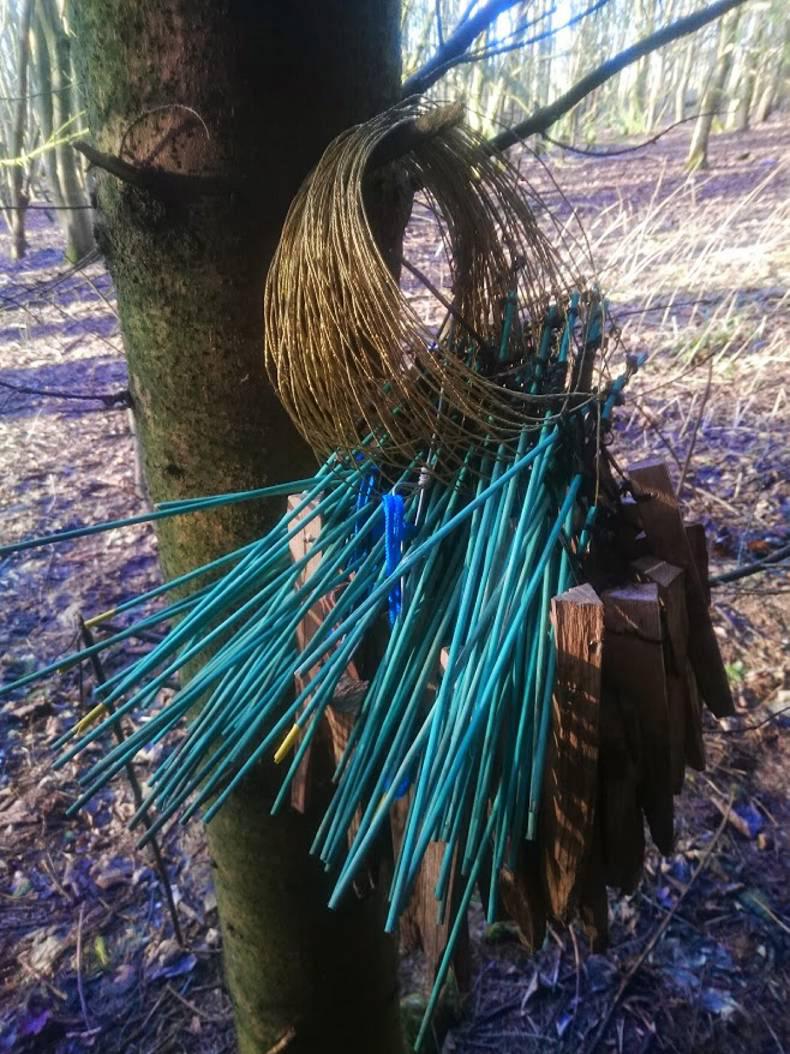
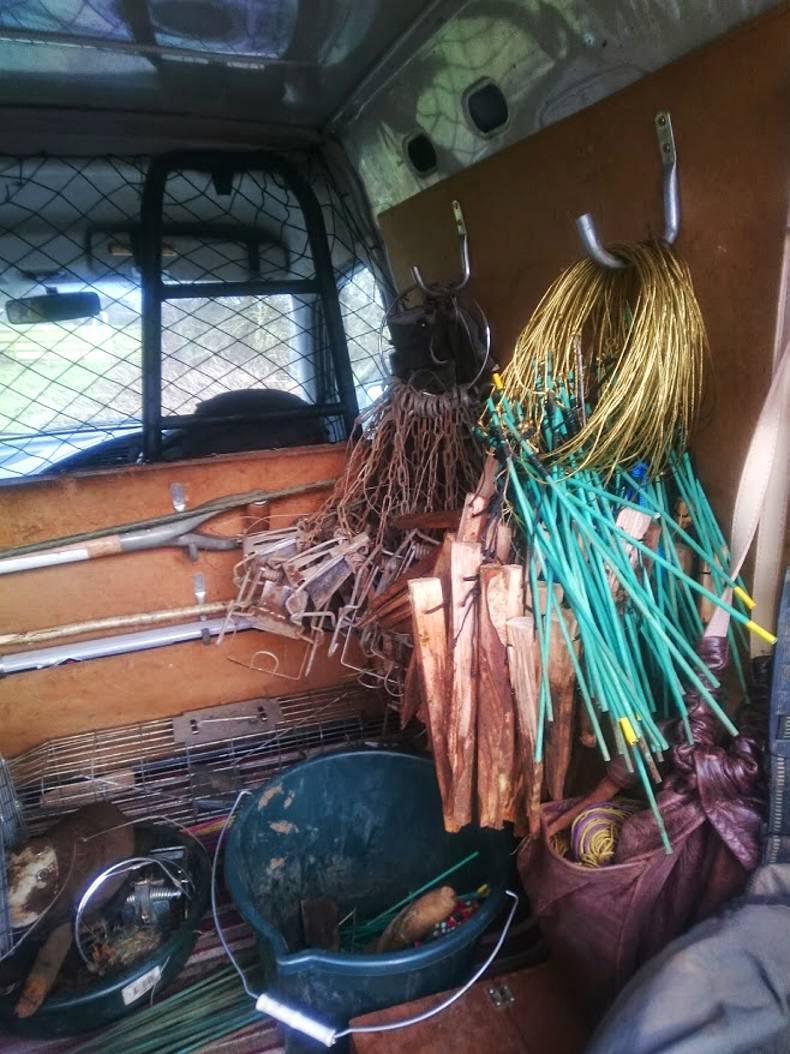


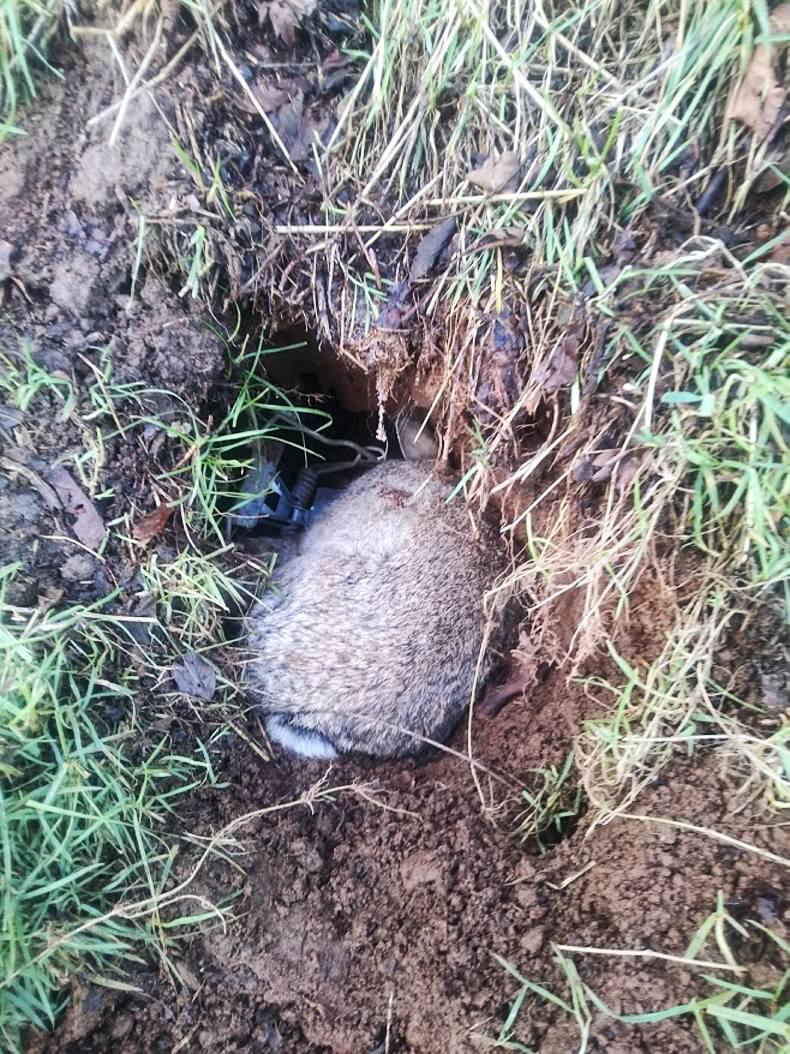

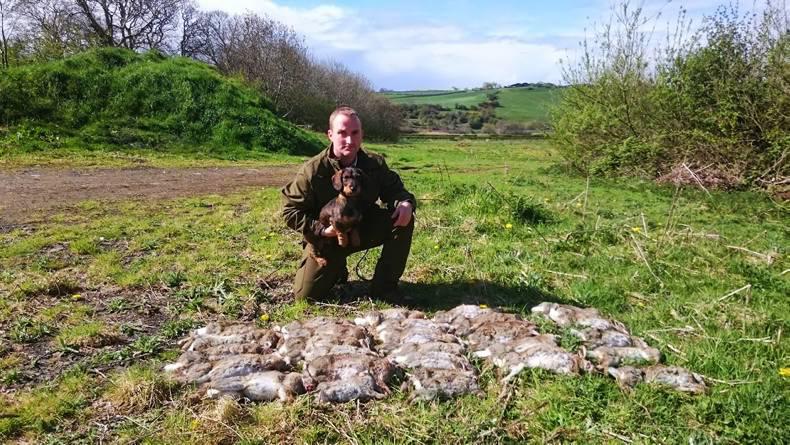
SHARING OPTIONS